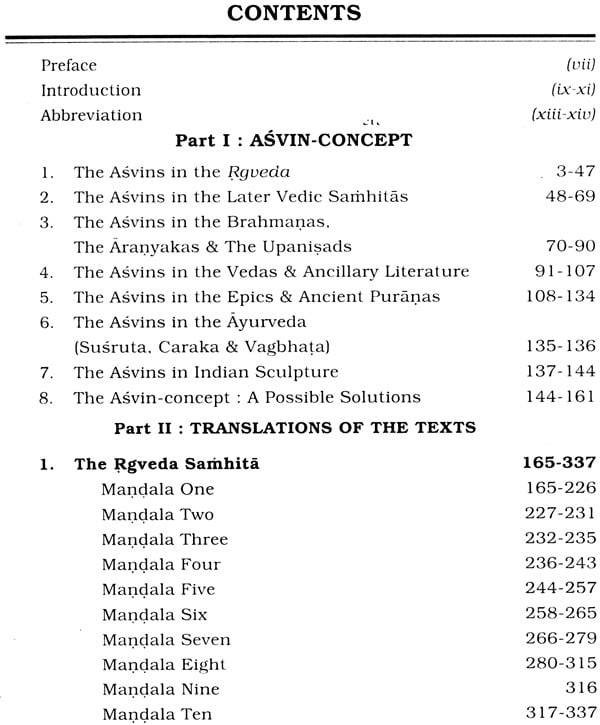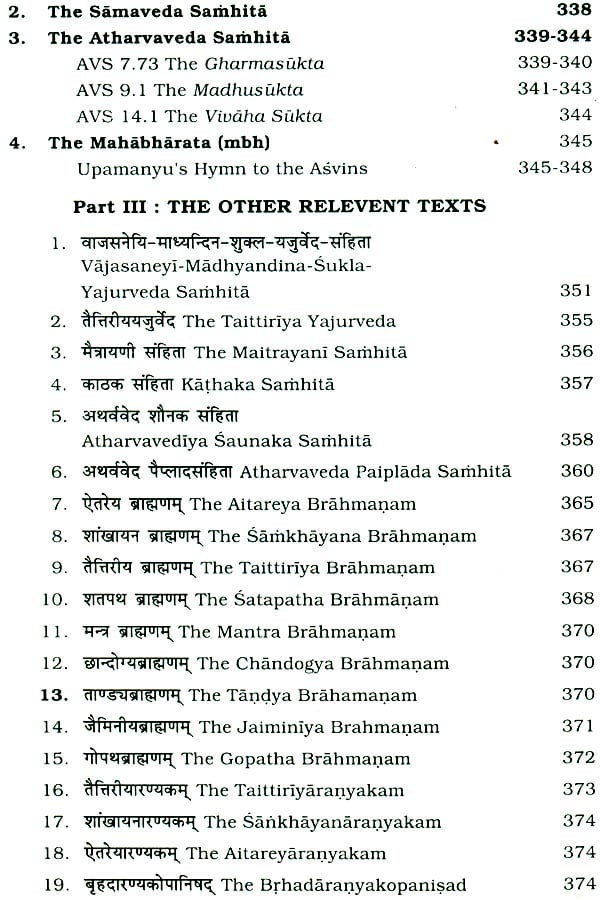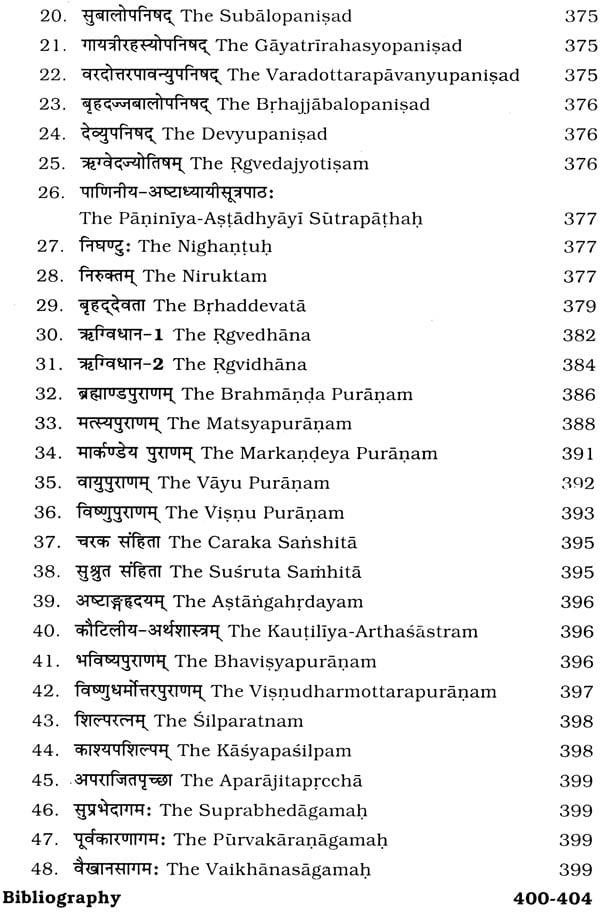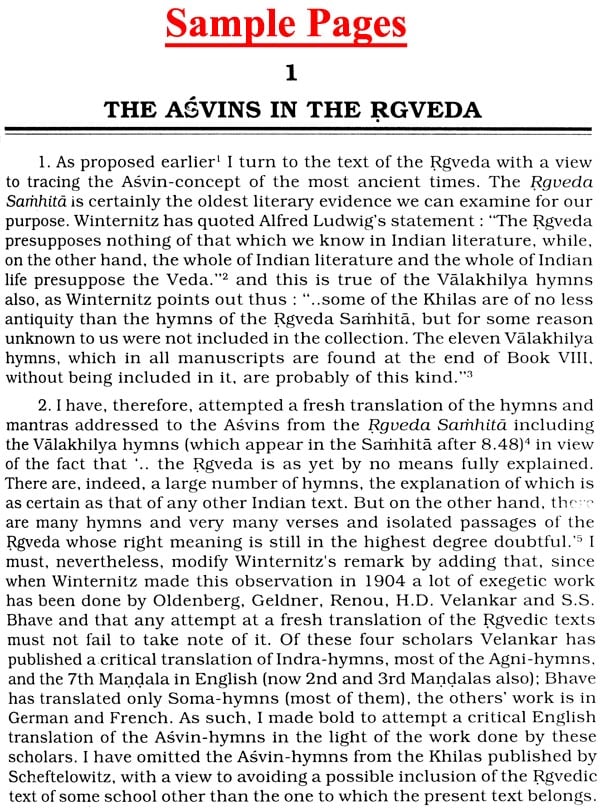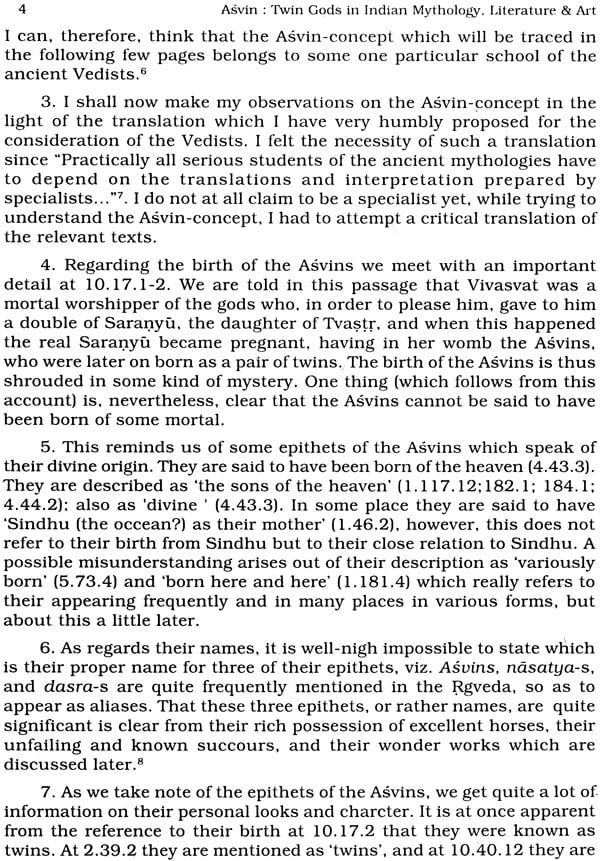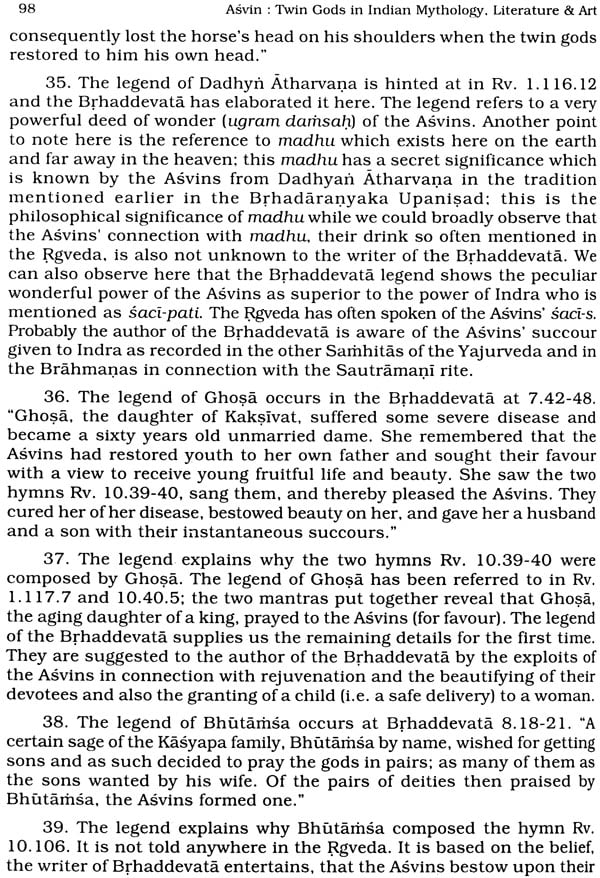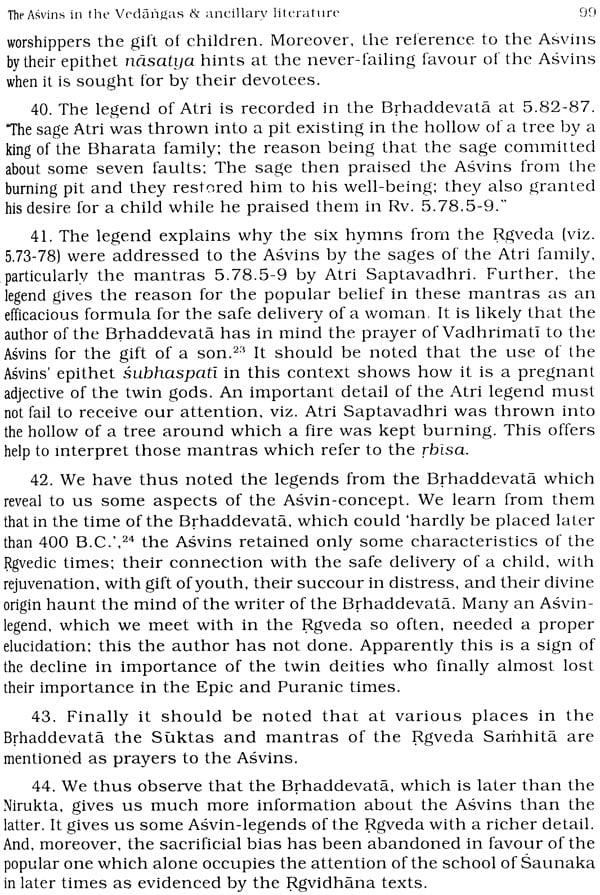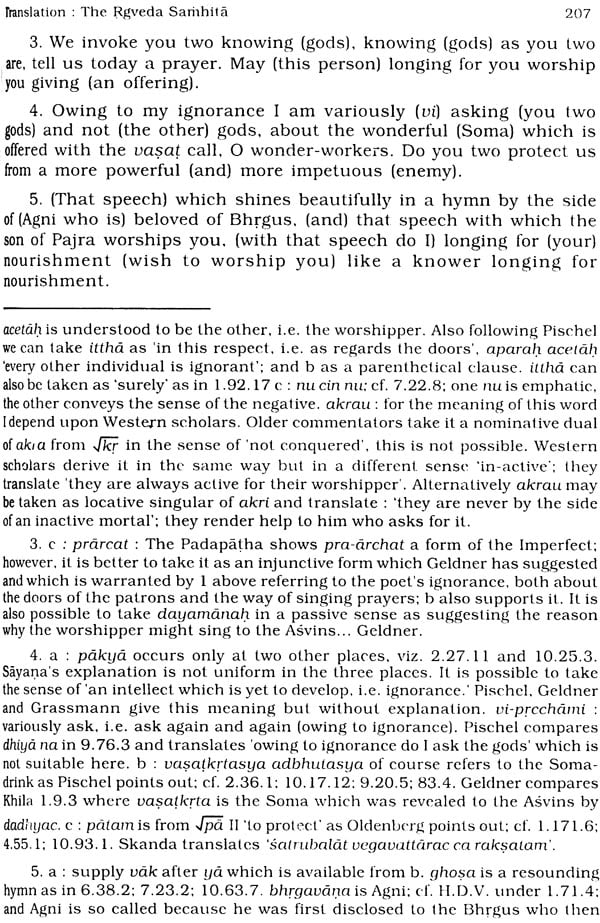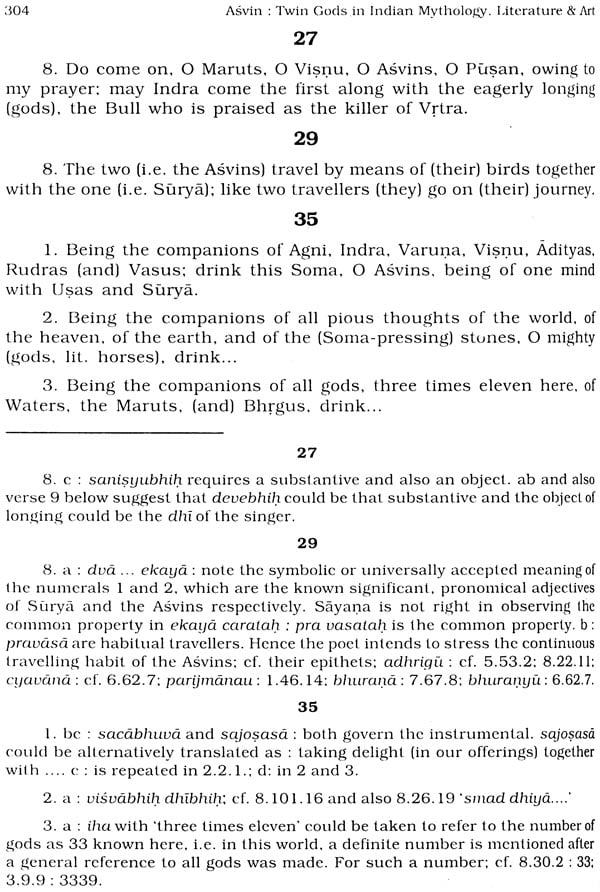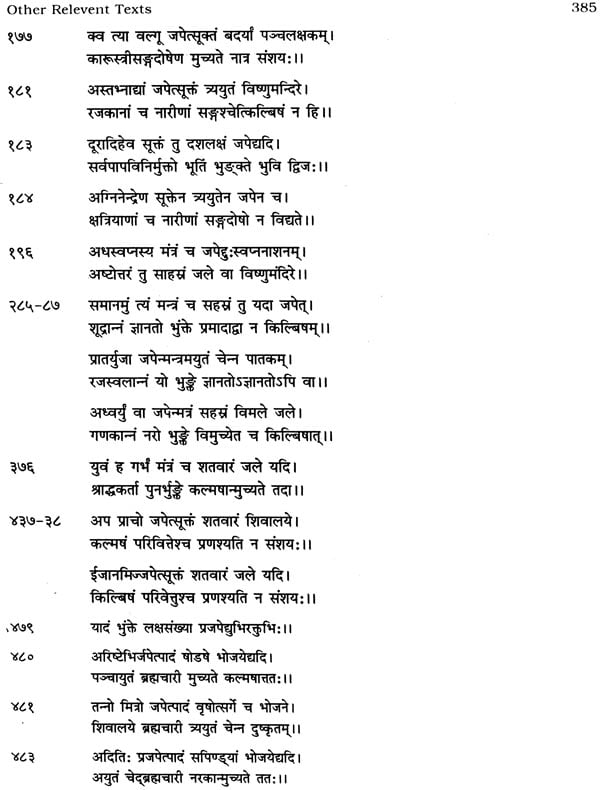
Asvins (The Twin Gods in Indian Mythology Literature & Art)
Book Specification
| Item Code: | NAP926 |
| Author: | K.P. Jog |
| Publisher: | Pratibha Prakashan |
| Language: | English |
| Edition: | 2005 |
| ISBN: | 8177020889 |
| Pages: | 422 |
| Cover: | HARDCOVER |
| Other Details | 9.50 X 7.50 inch |
| Weight | 1 kg |
Book Description
This work is an outcome of the author's research at the University of Bombay. It is an analytical critical and comprehensive study of the mythology of the Asvins in Indian tradition. The book covers a large span of literature-from Rg-veda to Iconographical texts. Also it contains exhaustive translations of the Asvin hymns from the Vedic samhitas and the Mahabharata. The other text related to Asvins has been presented with critical notes.
The present work analise maximum references of Asvins from the ocean of Indian literature and mythology.
Dr. K.P. Jog (M.A. Ph.D., Bombay) is a renowned Vedic Scholar. He is a retired Professor of Vedic Sanskrit and General Editor of Sanskrit Dictionary Project of Deccan College, Pune. A National lecturer in Sanskrit for the year 1984-85 he was Director of Mm. P.V. Kane Research Institute of the Asiatic Society of Bombay.
His voluminous translation of Suresvaras Vartika on Brhadaranyakopanisad act is the mile-stone in Upanisadic studies.
Prof. H.D. Velankar. who taught us. M.A. students. the seventh Mandala of the Rgveda, awakened in me a wish that I worked under him as a research student of the Veda. When I approached him with a request to accept me as a Ph.D. student. he very kindly accepted to initiate me in Vedic studies. The following is nothing else than the result of his Asvin-like impulse which I have had the rare luck of receiving from him during the last few year. I wonder if I should be able some day to repay the unreadable debt I owe him on this account.
Prof. RP. Kangle, my teacher at the Elphinstone College had also encouraged me in my work from time to time. He has obliged me by giving me an English rendering of the relevant French work by Dumezil. I do not know how I could express my gratitude to him.
I must thank the authorities of the Libraries of the D.E. Society's Kirti College. Bombay; the Ramnarain Ruia College. Bombay; the Bharatiya Vidya Bhavan, Bombay; The K.R Cama Oriental Institute. Bombay; the Deccan College Research Institute. Poona and also Shri. C.G. Raje and Kum. Bhise who kindly lent me all assistance without which I would not have been able to use many of the rare books and journals which I needed in my work.
A grateful acknowledgement is due to the authorities of the prince of Wales Museum. Bombay; the Sarasvati Bhandar and Museum. Kota; and the Bharatiya Vidya Bhavan, Bombay; who have enabled me to insert the photoprints and printed linedrawings of some Asvin-tmages.
Finally. I have to thank all my well-wishers who have helped me in the making of this thesis. I would particularly mention Smt. Padma Sahasrabuddhe. Prof. K.V. Apte, Prof. K. D. Samudra. Prof. S.A. Upadhyaya. and Sarvashri P.R Sathe. A.N. Sadhale, Keshav Gokhale. (Delite Printers. Bombay). B.G. Rajd er kar , S.Y. Lele. and P.P. Ambardekar. amongst them.
1. The great Vedic Mythologist Hillebrandt has quoted at the very beginning of his introduction, a statement of Andrew Lang, viz. "Nothing in all mythology is more difficult than the attempt to get a clear view of the gods of Vedic India."! This is more particularly felt in the case of the Asvins who have been an enigma for the mythologists since the days of Yaska who asks, as it were in despair, 'who then are the Asvins?' Let us not also forget that Yaska begins the discussion on the mythic concepts of Vedic divinities with that on the Asvins.' He has then quoted as many "as six earlier views before he states his own. Since then the solution to this problem has ever attracted and yet eluded every mythologist till our time. About the Asvins a modern mythologist has observed: The twin Nasatyatu), are among the most 'opaqu of all the Rgvedic gods.
2. As a mythologist begins a querry as to what the Asvins represent, a number of answers are offered to him, and, instead of solving the riddle of the twin gods for him they lead him only to bewilderment; they leave him only all 'the more puzzled.
The various views in the case of the Asvins are :
(i) The Asvins are the Heaven and the Earth;
(ii) They are the Day and the Night;
(iii) They are the Sun and the Moon;
(iv) They were some two kings of meritorious deeds; (v) They are gods who possess (excellent) horses;
(vi) They are the promoters of truth;
(vii) They are the gods born from the nostrils (of a mare);
(viii) They are gods who destroy calamities;
(ix) They are Indra and the Sun;
(x) They are the twin-lights at day-break;
(xi) They are the morning and the evening stars;
(xii) They are the twin constellation of Gemini;
(xiii) They are saints (Notheilige) of purely Indian origin; and
(xiv) They are rain-gods.
4. Myths did gather about the gods of ancient India, yet the very circumstances which originated the concepts of these deities did not allow as much obscurity as there is in the case of the Asvins, Thus Indra, Agni, and Soma, who are for the warlike Aryans of ancient India greater divinities than the Asvins, represent the more turbulent and the more immediate concepts of the people. The warlike Indra must certainly be their greatest god, Agni as the intermediary between the heaven together with its great hero, viz. Indra, and the mortals must come next in importance. In the same way Soma, the pleasant elixir of the heaven's hero as well as the cherished drink of the mortal worshipper, who fulfilled for the ancient Aryan an immediate problem, became for him a god next only to Indra and Agni. Such is not the case of the origin of the Asvin-concept: obscurity in the Asvin-myths has consequently resulted into the wide variety of opinions on the Asvin-concept which we have noted above.
5. Upon a careful examination of these various opinions on the riddle of the Asvin-concept, one thing becomes abundantly clear: no one of these opinions finds a full support of the entire mass of the hymns and verses of the Rgveda addressed to the Asvins. Each theory explained only some part of the Rgvedic texts; the other either remained unexplained by the theory or stood in opposition to it. It is, moreover, clear that these opinions disagree to such an extent that they disprove one another. This has so happened because whosoever held an opinion on this problem started with a certain preconceived notion about the divinities. Some had a bias for etymology, while some saw everywhere some natural phenomenon deified. Some were experts in legendary matter (as we are told), while some others felt satisfied in seeing some similarity between the Vedic twins and those of others civilisations.
6. I also could not resist the temptation to review the enigmate Asvin- concept anew. I thought it worthwhile to propose a fresh translation of the relevant texts of the Rgveda (this appears in the second part) and then trace a clear picture of the Asvins in the light of the same. Further, I felt it was necessary to see if there is any evolution of the concept of these divine twins, in the later literature upto the end of the period of the ancient Puranas. However, the Srauta and Grhya Sutras were not included in the material which formed the basis of our discussion, since they don't give any mythic thought worth the name and only give the ritual of the Brahmanas in fuller detail. It was equally proper to turn to the Ayurvedic tradition and see if the divine physicians had anything to do with it. The question naturally arose if the mythic-concept of the Asvins had found a formal expression in ancient Indian iconography, both in the texts which prescribed rules for the making of images and in the available images of the twin gods. A question is then taken up, if mythologies of other ancient civilisations also gave any clues relevant upon the Asvin-concept.
7. A few words now about the arrangement of this work. The work is divided into three parts: the first part is devoted to the Asvin-concept and the second to the translation of the relevant texts with a brief annotation wherever found necessary and the third part has been devoted to the different texts related to asvin with critical notes.
